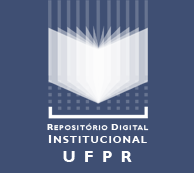“Wild cashew brings many benefits and even beauty”: use and extraction of Anacardium occidentale L. (cajuí) by communities in the Parnaíba River Delta, Northeast Brazil
Resumo
Natural populations of cajuí (Anacardium occidentale L.) are ecologically and socioeconomically important for many people in Northeastern Brazil. This study focuses on the use and management of wild cashew in the communities Canárias in Maranhão and Labino and Barrinha in Piauí. Semi-structured forms were applied to 88 participants. The Use Diversity (UDs) and Plant Part Value (PPV) indexes were calculated and a multivariate linear regression analysis was performed. The majority (73%) of the interviewees were women. Cajuí was mainly used for food (UDs: 0.87), forage (0.08), medicinal preparations (0.03), and fuel (0.02). The hypocarp had the higher PPV (0.76). Cajuí fruits are collected in groups, in the forest (50%), during the harvest season (July to October). Cajuí has great socioeconomic importance for the communities studied and allow the continuity of the cultural identity associated with socio-biodiversity.
Palavras-chave
Texto completo:
PDF (English)DOI: http://dx.doi.org/10.5380/dma.v62i0.82153





